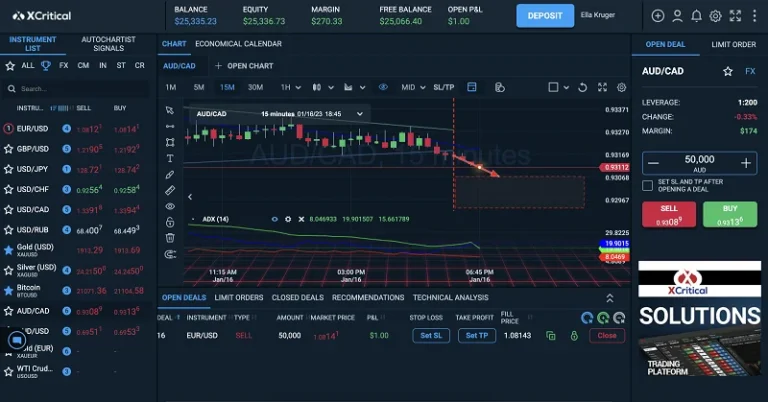Remember, the markets are as much about numbers as they are about narratives. It’s not nearly predicting the following massive trend; it’s about understanding the tales behind them. And with fundamental and technical analysis by your aspect, you’re well-equipped to write your own success story. The Road Ahead Markets evolve, and with them, the tools we use should adapt. However, the foundational rules of elementary and technical evaluation stay steadfast.
Fundamental analysts dismiss technical evaluation as too complex, too dangerous, and too vague. Fundamental analysis is predicated on evaluating economic components corresponding to the value of a company’s belongings, its sales and revenue record and its dividend payout ratio. The articles and analysis assist materials obtainable on this site are instructional and aren’t meant to be funding or tax recommendation.
Necessities Of Technical Evaluation
Stocks fluctuate in value as a end result of a wide range of threat components, together with altering financial, political, or market situations, or in response to events that affect specific industries or corporations. Each investor ought to evaluate their capability to invest for a long run, especially during times of downturns available within the market. Many critics view technical evaluation difference between technical and fundamental analysis as unproven at finest or wishful thinking at worst. Do not be stunned to listen to these critics question the validity of the self-discipline to the purpose the place they mock supporters. While most Wall Street analysts give attention to the basics, many companies usually employ technical analysts as properly. Support and resistance can be discovered on all time frames, from multi-decade charts to multi-minute intraday charts.

Charles Dow is perhaps best recognized for co-founding Dow Jones & Company and growing a set of rules that got here to be often recognized as Dow Theory. This work laid the groundwork for technical evaluation in monetary buying and selling. Technical analysts search for patterns in stock charts that can be used to foretell future value movements, figuring out full nicely that some designs are better than others at predicting future worth motion. The worth at which the customer and seller of the share, decides to settle the deal, is one such worth which mixes, weighs and expresses all of the factors, and is the only worth which issues.
Company Revenue
Fundamental analysts believe that costs will transfer regarding underlying fundamentals of a company, market or economy. They are involved with long-term elements similar to growth potential and the power to manage through financial cycles. Technical merchants dismiss elementary analysis saying it is old-fashioned by the point it is printed. They say it takes time for modifications in economic situations to affect prices so no one can know what the market will do subsequent. In essence, each elementary and technical analysis provide unique lenses to view the market. The Ultimate Decision In the top, the choice between basic and technical evaluation isn’t binary.
- Understanding the variations between elementary and technical analysis is crucial for making knowledgeable investment selections.
- Trading quantity also can give a sign as to the general psychology of the market.
- Think of it as capturing the rhythm of the market, dancing to its ebbs and flows.
- The Road Ahead Markets evolve, and with them, the tools we use must adapt.
- Investors regularly mix the principles of basic and technical analyses to make more informed investment decisions.
First, it could possibly help merchants assess whether or not a inventory is liquid sufficient to simply commerce. The lines the saying alludes to are referred to as support and resistance ranges. These are the levels the place the market traditionally both paused or reversed direction in worth. Many beginner merchants are often confused as to which form of evaluation is finest and what they need to give consideration to. So let’s take a deeper take a look at each strategies and how useful they can be for the everyday dealer.
Combining Elementary And Technical Analysis
Revenue is the amount of income a company brings in over a sure time period through issues like sales, fees, and royalties. Let’s dig a little deeper right here … This type of analysis can seriously change your method to the market. We need to establish how correct every method is and how regularly they supply profitable indicators. A collection of backtests may be performed on both methods to determine their accuracy and profitability over numerous durations – anywhere from three months to five years.
Fundamentally focused buyers often wait a very lengthy time earlier than a company’s intrinsic worth is reflected out there, if at all. For instance, value buyers typically assume that the market is mispricing a security over the brief term, but in addition assume that the value of the inventory will right itself over the long term. This “long run” can symbolize a timeframe so long as a number of years in some instances. Technical analysts usually consider that there’s no purpose to research a company’s financial statements because the stock price already includes all relevant info.

Artificial Intelligence (AI) penny stocks represent a high-risk, high-reward phase of the stock market, the place shares… Penny stocks on Robinhood, typically priced at $5 or much less per share, supply alternatives for merchants who’re building… A help stage is where the price rises — it’s supporting the stock worth. A resistance degree is the place the price falls — it supplies resistance to cost. The balance sheet shows a company’s property, liabilities, and fairness at a certain point in time.
Fundamental analysis is generally for these on the lookout for long-term worth. While elementary and technical evaluation have their strengths and weaknesses, they can be used collectively to provide a extra full image of a company’s monetary well being and future potential. When selecting between fundamental and technical evaluation, traders ought to contemplate several elements, including their funding targets, threat tolerance, and time horizon.
It’s akin to a chef knowing simply the correct quantity of spice to add to a dish—too much or too little can skew the flavour. A monetary skilled will offer steering based mostly on the data supplied and supply a no-obligation call to better perceive your situation. Biotech penny stocks are low-priced shares in small pharma and drug growth and treatment corporations. There are numerous chart patterns on the market, but don’t think you have to study all of them.
A stock price that trades beneath a company’s intrinsic worth is typically thought of an excellent investment alternative and vice versa. Fundamental analysis is an investment strategy that examines an organization’s monetary statements and financial indicators to determine its underlying value and potential for growth. Technical evaluation takes a relatively short-term strategy to analyzing the market, and is used on a timeframe of weeks, days and even minutes. So it’s extra commonly used by day traders as it goals to select assets that could be sold to another person for the next price in the short time period. Many traders and traders go for a blended method, leveraging the strengths of each.
Some traders may lean heavily on one, while others strike a balance, harnessing the combined might of each methodologies. It doesn’t present insights into a company’s monetary well being or future potential. Technical analysis is important in funding decision-making as a end result of it provides buyers with insights into market trends and momentum. There isn’t any guarantee that either of those funding approaches will work under all market conditions.
Here, past market information gets scrutinized, charting patterns and trends to foretell future price movements. By analyzing value and volume charts, investors can determine patterns and developments that can be used to foretell future worth movements. The results of quantitative analysis provide insight into the valuation or historic efficiency of a particular security or market. But quantitative evaluation just isn’t often used as a standalone method for evaluating long-term investments. Instead, quantitative analysis is used along side elementary and technical analysis to determine the potential benefits and risks of funding choices. Technical evaluation makes use of data from brief durations of time to develop the patterns used to foretell securities or market motion, while fundamental evaluation depends on information that spans years.
Fundamental Analysis studies all those factors which have an impact on the stock price of the company in future, corresponding to financial assertion, administration process, trade, and so forth. It analyzes the intrinsic worth of the agency to determine whether the stock is under-priced or over-priced. On the opposite hand, technical evaluation uses past charts, patterns and developments to forecast the worth actions of the entity in the coming time. To start a blended approach, you may initially gauge the intrinsic value of an asset through elementary evaluation.
Nevertheless, the blended approach is balanced, offering the depth of basic evaluation and the real-time applicability of technical analysis. Technical Analysis is used to forecast the price of a share, which says that the worth of a share of the corporate is predicated on the interaction of demand and provide forces, working in the market. It is used to forecast the future market price of the stock, as per the past efficiency statistics of the share. For this purpose, to start with, the changes in the price of the inventory are ascertained, to know the way the worth will change in future. As our exploration attracts to an in depth, we stand at a vantage point, gazing upon the huge financial panorama. The instruments in our arsenal, fundamental and technical analysis, are not mere methodologies.